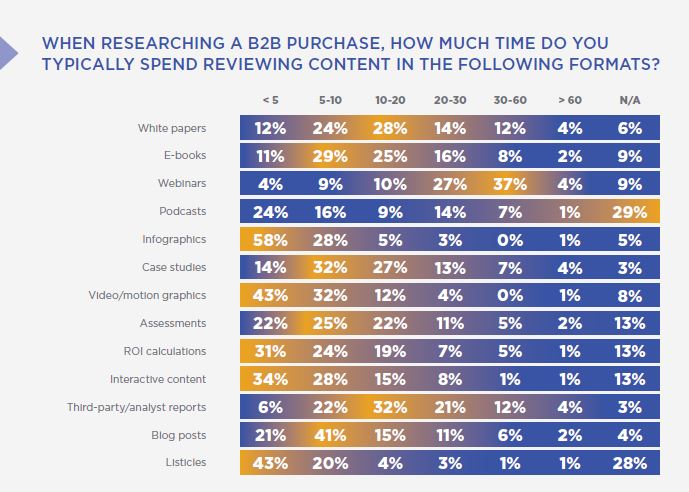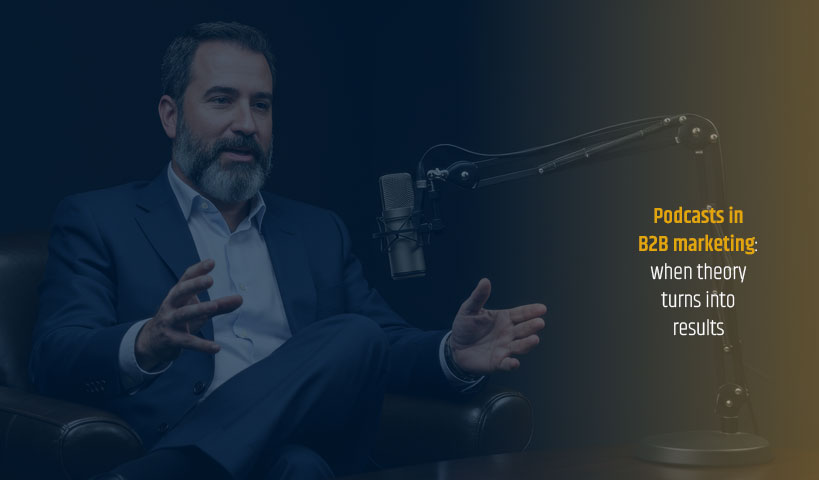
Eleven years ago, I was involved in writing a book entitled “Why blog in a business context” and what we found out then still applies today. A blog is always relevant in a professional context and especially, in content marketing strategies, whether in B2B or B2C. And that’s also why Exo B2B has scrupulously kept their blog going since 2009, cumulating more than 400 blog posts…
So why talk about this now?
Because this reality is central in the sixth edition of the “Content Preferences Survey report [2018]“, published by Demand Gen Report and sponsored by Content4Demand.
According to the data collected, B2B buyers are increasingly informed and selective in the content they decide to consume. A large majority (88%), recognizes that content creators need to focus less on product details and more on the value that can be made to their business. Three-quarters (75%), strongly agree that creators should use more data and more research to support their claims or suggestions published in their content. Hence the title “Trustworthy Sources”.
The concept of “Trust” is not new in marketing. You may remember the book by Chris Brogan and Julien Smith called “Trust agents”. In this new era of fake news, buyers are asking more of us and more of their potential partners. They want reliable content, documented with data, just as in this text… Stop talking to me about your products and tell me more about what the value of our business relationship might be to me. Got it?
A blog with reliable sources
Based on the figures above, no less than 78% of respondents (VP or B2B Marketing Managers), prioritize the reliability of information or content sources and 65% of content from industry influencers. Interestingly, we find in third place and at 51% the principle of infobesity; the fact that consumers feel overwhelmed by the immense stream of content available. That’s the famous “Content Shock” principle brought up in 2014 by Mark Schaefer. And yet, here we are, four years later.
The blog is part of the purchasing process
To surf these oceans of content, nothing beats navigational tools and reliable pilots. What do your potential partners or buyers rely on first? Well guess what: it’s blogs! …and podcasts. This is where they start their purchasing process. For some, it may seem very old-school and out-of-fashion. Because they’re going through tought times, these blogs and podcasts! How oftne have we predicted their disappearance in favor of new social channels such as Facebook and LinkedIn networks? Or in favor of video and streaming? Or maybe in favor of IA, nowadays?
And yet it seems that respondents prefer tools available on a set of mobile platforms. As such, blogs at 71% and podcasts at 64% are among the privileged tools and are preceded only by case studies (79%) and infographics (76%). Other forms of content preferred by respondents include: webinars (66%), video (49%) and interactive content (36%). As for sharing content with others, the blog is still leading (see below).
And what do we share them with? Well, some of you will be disapointed to learn that the email remains the first choice at 70%. LinkedIn follows at 52%, far ahead of Facebook, who still sees its percentage increase to 38%.
Longer blog posts
So here’s a surprising portrait. We have recently written about the length of blog posts and about the tendency to lengthen blogs and time spent reading them. According to the table above, the figures seem to say the opposite. The webinars are at the top of the list. More than a third of respondents (37%) say they spend between 30 and 60 minutes watching them.
In comparison, blogposts only score 6%. But you must look at those numbers differently. In the case of a blog, a long one takes an average of 5 minutes to read. So, you must look elsewhere, in the column of 5 to 10 minutes, and tadah! Blogs score highest at 41%.
DemandGen’s investigation report contains a host of additional data and stats, as well as some useful recommendations for all those interested in B2B content marketing. I think you should take a look! We also invite you to contact us to discuss them as part of your next content strategy.








